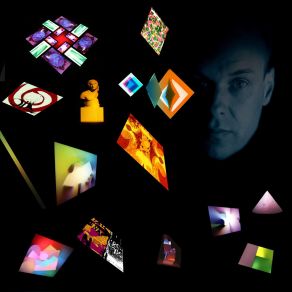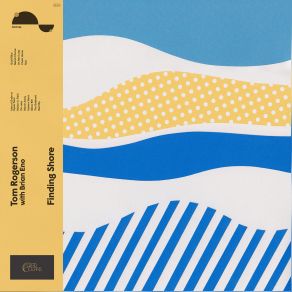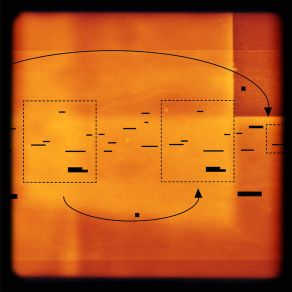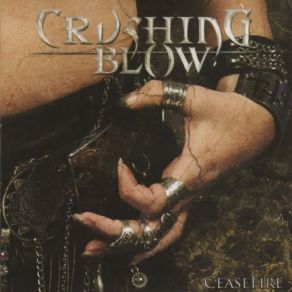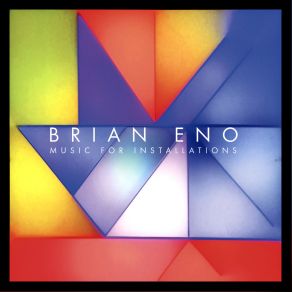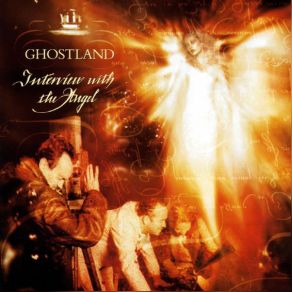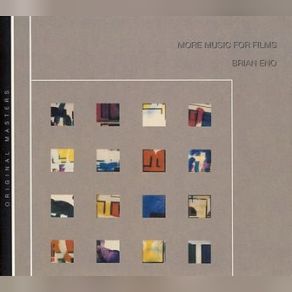Brian Eno
Wikimp3 information about the music of Brian Eno. On our website we have 70 albums and 70 collections of artist Brian Eno. You can find useful information and download songs of this artist. We also know that Brian Eno represents Electronica genres.
Biography
[Edit]Ambient pioneer, glam rocker, hit producer, multimedia artist, technological innovator, worldbeat proponent, and self-described non-musician — over the course of his long, prolific, and immensely influential career, Brian Eno was all of these things and much, much more. Determining his creative pathways with the aid of a deck of instructional, tarot-like cards called Oblique Strategies, Eno championed theory over practice, serendipity over forethought, and texture over craft; in the process, he forever altered the ways in which music is approached, composed, performed, and perceived, and everything from punk to techno to new age bears his unmistakable influence.
Brian Peter George St. John le Baptiste de la Salle Eno was born in Woodbridge, England, on May 15, 1948. Raised in rural Suffolk, an area neighboring a U.S. Air Force base, as a child he grew enamored of the "Martian music" of doo wop and early rock & roll broadcast on American Armed Forces radio; a subsequent tenure at art school introduced him to the work of contemporary composers John Tilbury and Cornelius Cardew, as well as minimalists John Cage, LaMonte Young, and Terry Riley. Instructed in the principles of conceptual painting and sound sculpture, Eno began experimenting with tape recorders, which he dubbed his first musical instrument, finding great inspiration in Steve Reich's tape orchestration "It's Gonna Rain."
After joining the avant-garde performance art troupe Merchant Taylor's Simultaneous Cabinet, as well as assuming vocal and "signals generator" duties with the improvisational rock unit Maxwell Demon, Eno joined Cardew's Scratch Orchestra in 1969, later enlisting as a clarinetist with the Portsmouth Sinfonia. In 1971 he rose to prominence as a member of the seminal glam band Roxy Music, playing the synthesizer and electronically treating the band's sound. A flamboyant enigma decked out in garish makeup, pastel feather boas, and velvet corsets, his presence threatened the focal dominance of frontman Bryan Ferry, and relations between the two men became strained; finally, after just two LPs — 1972's self-titled debut and 1973's brilliant For Your Pleasure — Eno exited Roxy's ranks to embark on a series of ambitious side projects.
The first, 1973's No Pussyfooting, was recorded with Robert Fripp; for the sessions Eno began developing a tape-delay system, dubbed "Frippertronics," which treated Fripp's guitar with looped delays in order to ultimately employ studio technology as a means of musical composition, thereby setting the stage for the later dominance of sampling in hip-hop and electronica. Eno soon turned to his first solo project, the frenzied and wildly experimental Here Come the Warm Jets, which reached the U.K. Top 30. During a brief tenure fronting the Winkies, he mounted a series of British live performances despite ill health; less than a week into the tour, Eno's lung collapsed, and he spent the early part of 1974 hospitalized.
Upon recovering, he traveled to San Francisco, where he stumbled upon a set of postcards depicting a Chinese revolutionary opera that inspired 1974's Taking Tiger Mountain (By Strategy), another sprawling, free-form collection of abstract pop. A 1975 car accident which left Eno bedridden for several months resulted in perhaps his most significant innovation, the creation of ambient music: unable to move to turn up his stereo to hear above the din of a rainstorm, he realized that music could assume the same properties as light or color, and blend thoroughly into its given atmosphere without upsetting the environmental balance. Heralded by the release of 1975's minimalist Another Green World, Eno plunged completely into ambient with his next instrumental effort, Discreet Music, the first chapter in a ten-volume series of experimental works issued on his own Obscure label.
After returning to pop structures for 1977's Before and After Science, Eno continued his ambient experimentation with Music for Films, a collection of fragmentary pieces created as soundtracks for imaginary motion pictures. Concurrently, he became a much sought-after collaborator and producer, teaming with the German group Cluster as well as David Bowie, with whom he worked on the landmark trilogy Low, Heroes, and Lodger. Additionally, Eno produced the seminal no wave compilation No New York and in 1978 began a long, fruitful union with Talking Heads, his involvement expanding over the course of the albums More Songs About Buildings and Food and 1979's Fear of Music to the point that by the time of 1980's world music-inspired Remain in Light, Eno and frontman David Byrne shared co-writing credits on all but one track. Friction with Byrne's bandmates hastened Eno's departure from the group's sphere, but in 1981 he and Byrne reunited for My Life in the Bush of Ghosts, a landmark effort that fused electronic music with a pioneering use of Third World percussion.
In the interim, Eno continued to perfect the concept of ambient sound with 1978's Music for Airports, a record designed to calm air passengers against fears of flying and the threat of crashes. In 1980, he embarked on collaborations with minimalist composer Harold Budd (The Plateaux of Mirror) and avant trumpeter Jon Hassell (Possible Musics), as well as Acadian producer Daniel Lanois, with whom Eno would emerge as one of the most commercially successful production teams of the '80s, helming a series of records for the Irish band U2 (most notably The Joshua Tree and Achtung Baby) that positioned the group as one of the world's most respected and popular acts. Amidst this flurry of activity, Eno remained dedicated to his solo work, moving from the earthbound ambience of 1982's On Land to other worlds for 1983's Apollo: Atmospheres & Soundtracks, a collection of space-themed work created in tandem with Lanois and Eno's brother Roger. In 1985, Eno resurfaced with Thursday Afternoon, the soundtrack to a VHS cassette of "video paintings" by artist Christine Alicino.
After Eno produced John Cale's 1989 solo effort Words for the Dying, the duo collaborated on 1990's Wrong Way Up, the first record in many years to feature Eno's vocals. Two years later he returned with the solo projects The Shutov Assembly and Nerve Net, followed in 1993 by Neroli; Glitterbug, a 1994 soundtrack to a posthumously released film by Derek Jarman, was subsequently reworked by Jah Wobble and issued in 1995 as Spinner. In addition to his musical endeavors, Eno also frequently ventured into other realms of media, beginning in 1980 with the vertical-format video Mistaken Memories of Medieval Manhattan; along with designing a 1989 art installation to help inaugurate a Shinto shrine in Japan and 1995's Self-Storage, a multimedia work created with Laurie Anderson, he also published a diary, 1996's A Year with Swollen Appendices, and formulated Generative Music I, a series of audio screen savers for home computer software. In August of 1999, Sonora Portraits, a collection of Eno's previous ambient tracks and a 93-page companion booklet, was published.
Around 1998, Eno was working heavily in the world of art installations and a series of his installation soundtracks started to appear, most in extremely limited editions (making them instant collector's items). In 2000, he teamed with German DJ Jan Peter Schwalm for the Japanese-only release Music for Onmyo-Ji. The duo's work got world-wide distribution the next year with Drawn from Life, an album that kicked off Eno's relationship with the Astralwerks label. The Equatorial Stars, released in 2004, was Eno's first work with Robert Fripp since Evening Star, the 1975 follow-up to No Pussyfooting. His first solo vocal album in 15 years, Another Day on Earth, was issued in 2005, followed by 2008's Everything That Happens Will Happen Today, another collaboration with David Byrne. In 2010, Eno signed to the Warp label, where he released Small Craft on a Milk Sea, a collaboration with Leo Abrahams and Jon Hopkins. The following year's Drums Between the Bells featured poet Rick Holland, as well as several vocalists. Eno returned to his ambient style of recording with Lux in late 2012. His next project, was a collaboration with with Underworld's Karl Hyde. Bonding over a shared love of Afrobeat, the pair worked on a bunch of intros Eno had lying around but had never been able to finish, resulting in a surprising collection of unusual pop songs. The finished album, entitled Someday World, was issued in May of 2014, followed by the pair's second album, High Life, a scant two months later.
Title: 801 Live (& Phil Manzanera)
Artist: Brian Eno
Genre: Ambient, Electronica, Rock, Experimental Rock, Pop
Title: Apollo: Atmospheres And Soundtracks (Extended Edition) (CD1)
Artist: Brian Eno
Genre: Ambient, Electronica
Title: Apollo: Atmospheres And Soundtracks (Extended Edition) (CD2)
Artist: Brian Eno
Genre: Ambient, Electronica
Title: No Pussyfooting (& Robert Fripp) (Maxi-Single)
Artist: Brian Eno
Genre: Ambient, Electronica, Experimental Rock, Pop
Title: Desert Island Selection
Artist: Brian Eno
Genre: Ambient, Electronica, Rock, Glam Rock, Punk, Alternative
Title: Neroli (Thinking Music, Pt. IV) [Expanded Edition]
Artist: Brian Eno
Genre: Electronica, Alternative
Title: Lady Junes Linguistic Leprosy (Kevin Ayers & Eno) (Vinyl,)
Artist: Brian Eno
Genre: Ambient, Electronica, Experimental Rock, Pop
Title: Top Boy (Score From The Original Series) (Original Soundtrack)
Artist: Brian Eno
Genre: Theatre/Soundtrack
Title: The Equatorial Stars (Robert Fripp & Brian Eno)
Artist: Robert Fripp Brian Eno, Brian Eno
Genre: Ambient, Electronica, Experimental Rock, Pop
Title: More Music for Films
Artist: Brian Eno
Genre: Ambient, New Age, Electronica, Theatre/Soundtrack
Title: Brian Eno X Nicolas Jaar X Grizzly Bear
Artist: Grizzly Bear, Brian Eno, Nicolas Jaar
Genre: Downtempo
Title: Stop the War Coalition (Benefit Concert) [Live]
Artist: Rachid Taha, Imogen Heap, Nitin Sawhney, Brian Eno, Mick Jones
Genre: Rock, Alternative
Title: Small Craft On a Milk Sea (Bonus Track Version)
Artist: Brian Eno
Genre: Ambient, Electronica, Jazz, Rock, Alternative
Title: Drums Between the Bells (Bonus Track Version)
Artist: Brian Eno
Genre: Ambient, Electronica, Jazz, Rock, Alternative
Title: Apollo: Atmospheres & Soundtracks (with Daniel Lanois & Roger Eno)
Artist: Brian Eno
Genre: Ambient, Electronica, Rock
Title: Machine Music (Original Soundtrack) (Maxi-Single)
Artist: Brian Eno, Gavin Bryars, John White
Genre: Ambient, Electronica, Experimental Rock, Pop
Title: Begegnungen (Eno, Moebius, Roedelius, Plank)
Artist: Roedelius, Plank, Moebius, Eno, Brian Eno
Genre: Ambient, Electronica, Experimental Rock, Pop
Title: Before and After Science - Ten Pictures
Artist: Brian Eno
Genre: Ambient, New Age, Electronica, Rock
Title: One More Yard - EP
Artist: Brian Eno, Sinéad O'Connor / Sinead O'Connor, Evamore
Genre: Pop, Alternative
Title: Ambient 2 - Plateaux Of Mirror (Eno & Harold Budd)
Artist: Harold Budd, Brian Eno
Genre: Ambient, Electronica, Experimental Rock, Pop
Title: January 07003 (Bell Studies For The Clock Of The Long Now)
Artist: Brian Eno
Genre: Ambient, Electronica, Experimental Rock, Pop
Title: Music For Films 2 (More Music For Films)
Artist: Brian Eno
Genre: Ambient, Electronica, Experimental Rock, Pop, Theatre/Soundtrack
Title: Ambient 3 - Day Of Radiance (Eno & Laraaji)
Artist: Brian Eno
Genre: Ambient, Electronica, Experimental Rock, Pop
Title: Fractal Zoom (Includes Moby Remixes)
Artist: Brian Eno
Genre: Ambient, Electronica, Experimental Rock, Pop
Title: Beyond Even (Eno & Robert Fripp)
Artist: Robert Fripp Brian Eno, Brian Eno
Genre: Ambient, Electronica, Experimental Rock, Pop
Title: Hybrid (With Michael Brook & Daniel Lanois)
Artist: Brian Eno
Genre: Ambient, Electronica, Experimental Rock, Pop
Title: Clean - Music From The Motion Picture Soundtrack (Maxi-Single)
Artist: Brian Eno
Genre: Ambient, Electronica, Experimental Rock, Pop
Title: Chain Reaction: Alan Moore interviews Brian Eno (Episode 6, Series 5)
Artist: Brian Eno, Alan Moore
Genre:
Title: This Is Brian Eno. The Essential Tracks, All In One Compilation (CD2)
Artist: Brian Eno
Genre: Ambient, Electronica
Title: Ali Click (Maxi-Single)
Artist: Brian Eno
Genre: Ambient, Electronica, Experimental Rock, Pop
Collections
Title: Peter Gabriel: And I'll Scratch Yours
Genre: Rock
Title: Roadkill Remix, Vol. 1.03
Genre: House, Dancefloor, Dance Pop
Title: Plague Songs
Genre: Alternative
Title: Greater Lengths
Genre: Electronica, Alternative
Title: Argento vivo, Vol. 2
Genre: Theatre/Soundtrack
Title: Electrospective: Electronic Music Since 1958
Genre: Dancefloor, Dance Pop
Title: Pure Cinema Chillout
Genre:
Title: SING CITY CD 2
Genre: Rock, Art/Entehno
Title: DOGS IN SPACE
Genre: Theatre/Soundtrack
Title: Pure Moods CD 2
Genre: Club/Dance, Pop
Title: Pure Moods CD 3
Genre: Club/Dance, Pop, Classical
Title: The Art Of Chill 4
Genre: Ambient, Electronica, Dub
Title: I Could Have Been A Contender
Genre: Experimental Rock, Post Punk, Dub, Synth Pop
Title: Shutter Island (Original Soundtrack)
Genre: New Age, Theatre/Soundtrack, Classical
Title: Trainspotting (CD1)
Genre: Ambient, Techno, Pop, Theatre/Soundtrack
Title: Who'S That Man - A Tribute To Conny Plank (CD3)
Genre: Electronica, Electro
Title: Spacemusic 8. 3 Candles In Space
Genre: Electronica
Title: Ambient Chillout Mix 3 - Summer 2004
Genre: Electronica
Title: Ambient Chillout Mix 4 - Winter 2005
Genre: Electronica
Title: A Brief History Of Ambient Vol. 1 (CD1)
Genre: Ambient
Title: A Brief History Of Ambient Vol. 1 (CD2)
Genre: Ambient
Title: A Brief History Of Ambient Vol. 2 (CD1)
Genre: Ambient
Title: Ambient Chillout Mix 4
Genre: Electronica
Title: Traffic (Original Soundtrack)
Genre: Theatre/Soundtrack
Title: Heat (Original Soundtrack)
Genre: Theatre/Soundtrack
Title: Radio Gaga Vol. 01
Genre: Rock
Title: Lost Highway (Original Soundtrack)
Genre: Theatre/Soundtrack
Title: Heat (Music From The Motion Picture)
Genre: Electronica, Jazz, Theatre/Soundtrack
Title: The Best Chillout Ever (CD2)
Genre: Chill Out
Title: Radio Gaga Vol. 09
Genre: Rock
Title: Why Don'T We Do It In The Road
Genre: Hip Hop/R&B, Soul, Blues, Jazz, Rock, Country, Pop, Pop Rock
Title: Global Underground Afterhours 2 (CD2)
Genre: House
Title: The New Romantics (CD3)
Title: Bleep Selects 25 Years Of Warp
Genre: Ambient, Techno, Electro, Experimental, IDM
Title: FabricLive 09: Jacques Lu Cont
Genre: Breakbeat , Electronica, House, Techno
Title: Gaspar Noe - Love 3D (Original Soundtrack)
Genre: Theatre/Soundtrack
Title: New Music This Week (2016.05.11) (CD1)
Genre: Hip Hop/R&B, Latin, Synth Pop, Indie, Trap
Title: Mr. Robot (Unofficial Soundtrack)
Genre: Theatre/Soundtrack
Title: Cafe Del Mar Vol. 23
Genre: Ambient, Downtempo, New Age, Jazz, Instrumental, Instrumental
Title: Yoga And Deep House Meditation Music (CD1)
Genre: Electronica
Title: Back To The 90s: Greatest Hits (CD2)
Genre: Hip Hop/R&B, Rock, Punk Rock, Pop, Alternative
Title: 100 Greatest Love Songs 2020 (CD2)
Genre: Hip Hop/R&B, Soul, Vocal Jazz, Rock, World Music, Country, Eurodisco, Pop, Folk
Featuring albums
Title: What I Used To Play
Artist: Sven Väth / Sven Vath
Genre: House, Acid House, Techno, New Wave, Pop Rock, Synth Pop, EBM


